Key takeaways:
- Understanding the importance of light spectrum and intensity is crucial for optimal plant growth in indoor settings.
- Small adjustments, such as light positioning and reflective materials, can significantly enhance light efficiency and plant development.
- Timing light cycles in relation to plant growth phases leads to improved health and productivity.
- Combining blue and red light during specific growth phases results in vibrant blooms and improved overall plant vitality.
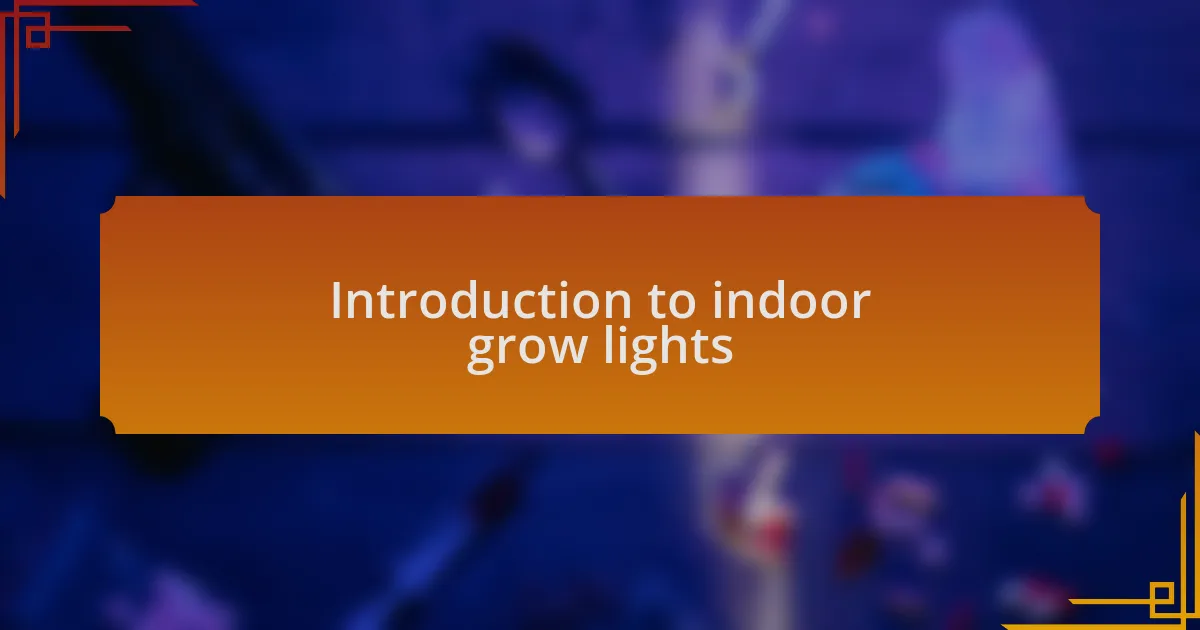
Introduction to indoor grow lights
When I first ventured into indoor growing, I was amazed by the sheer impact that grow lights could have on my plants. It’s incredible how the right light spectrum can mimic the sun, providing essential energy for photosynthesis. Have you ever wondered how plants thrive indoors without natural light?
In my journey, I discovered that not all grow lights are created equal. For instance, LED lights save energy and last long, but they often require an initial investment. I remember standing in a store, overwhelmed by choices, thinking about how crucial this decision was for my plants’ growth.
The emotional connection I formed with my plants pushed me to experiment with different setups. Ensuring they receive the correct intensity and light duration has transformed my indoor garden. Isn’t it fascinating how something as basic as light can hold such power over the health of our green companions?
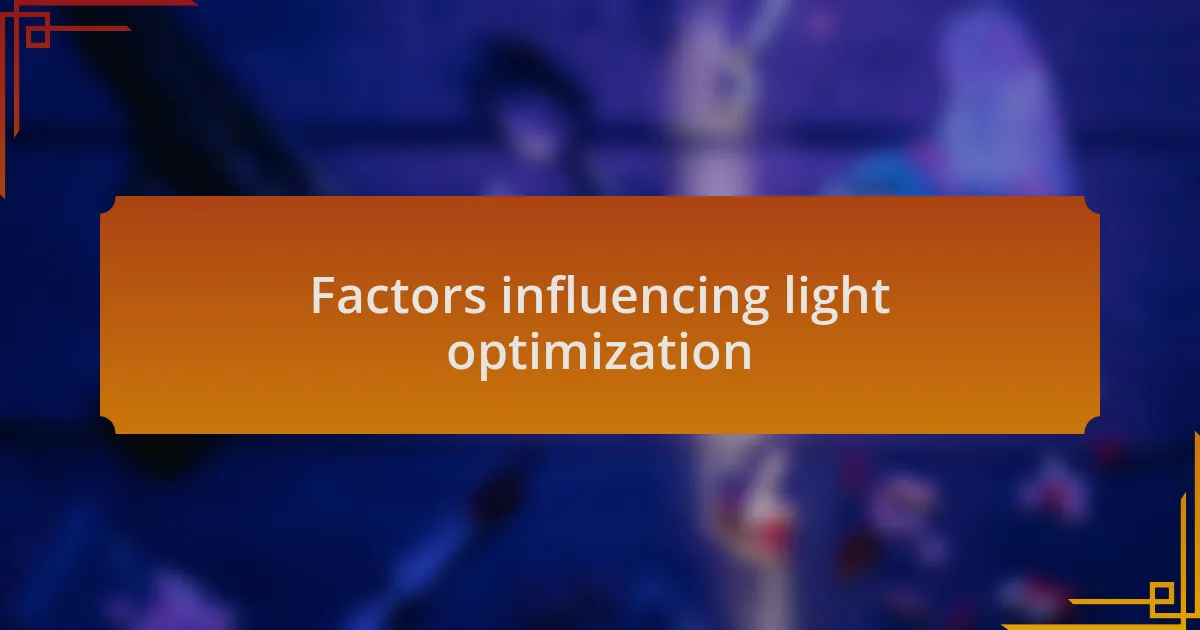
Factors influencing light optimization
When optimizing light for indoor growing, the distance between your lights and plants is crucial. I remember the early days when I placed my lights too close, resulting in burned leaves. It was a learning moment that underscored how small adjustments can significantly impact my plants’ health. Have you ever experienced that unexpected setback?
Another key factor is the light spectrum. Different phases of growth require specific wavelengths. I once experimented with adding supplemental red and blue spectrum lights during flowering, and the difference in bud development was remarkable. It felt like unlocking a new level for my plants, and I realized that understanding these wavelengths can drastically elevate the results.
Finally, I learned that environmental conditions, such as temperature and humidity, work hand in hand with light optimization. I recall a period where my room was too humid, leading to plant stress despite perfect lighting. This taught me that successful growing is about balance—just like in life, everything must align for the best outcomes. Have you found that harmony in your growing environment yet?
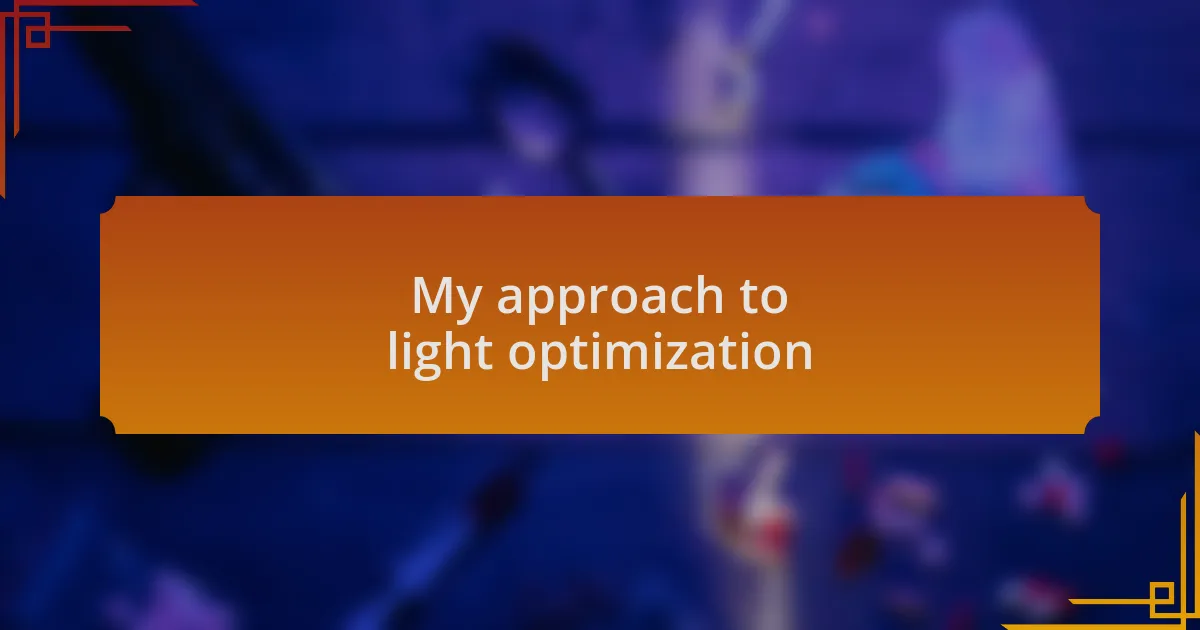
My approach to light optimization
My approach to light optimization has always been a blend of experimentation and observation. I vividly remember the moment I upgraded to full-spectrum LED lights. At first, I was skeptical—would they really make a difference? After a few weeks, the lively green leaves and robust growth convinced me they were worth the investment. It’s astonishing how a simple change can spark such vitality in your plants.
During my journey, I’ve found that timing plays a critical role in how light affects growth. When I switched to a more regimented light cycle, something shifted in my plants. They responded vigorously, and I felt a rush of pride watching them thrive. Have you noticed how critical it is to find that perfect timing for your light schedule? It’s like creating a rhythm—once you get it right, everything falls into place.
Lastly, I’ve begun to appreciate the finer details of light placement in my setup. There was a time when I neglected the angles of light exposure, and it resulted in uneven growth across my plants. After adjusting the positioning, I was amazed at how quickly they acclimated, almost as if they were grateful for the change. Isn’t it incredible how attentive care can lead to such profound improvements?
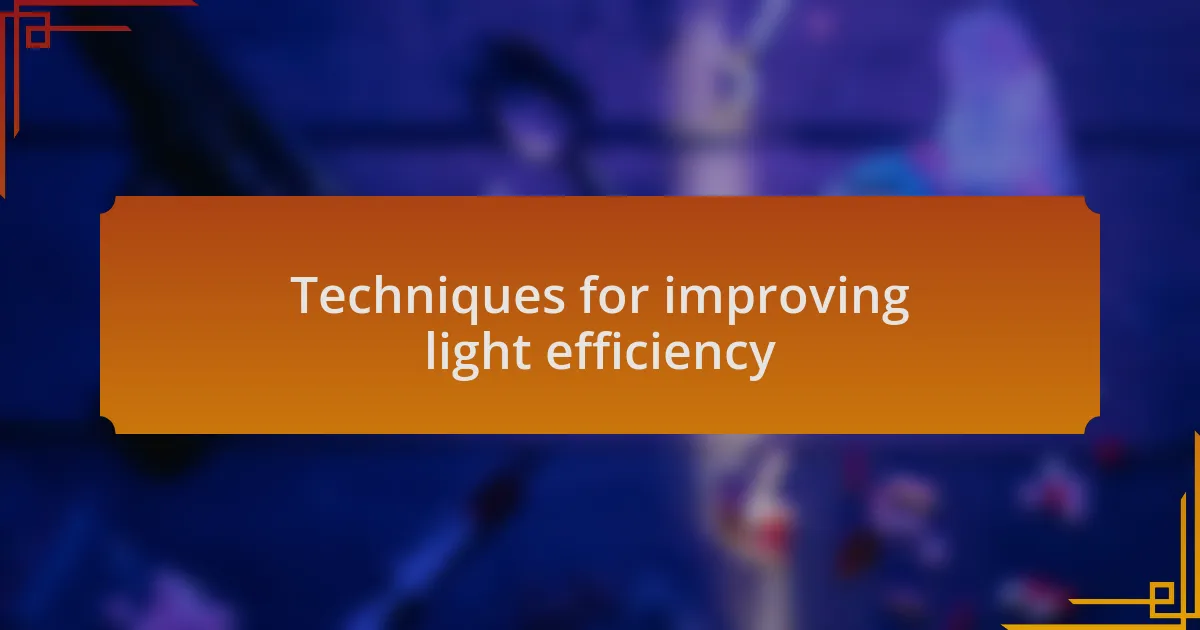
Techniques for improving light efficiency
One effective technique I adopted to improve light efficiency was the use of reflective materials. I remember when I first lined the walls of my grow tent with Mylar. The transformation was striking; the reflections amplified light distribution, ensuring my plants received adequate exposure from all angles. Have you ever considered how simple additions can dramatically impact your setup?
Another adjustment that paid off was fine-tuning the light height. I discovered that positioning my LED lights about 12 inches above the canopy yielded the best results. Initially, I was inconsistent, sometimes hanging them higher or lower without much thought. It was eye-opening to see how this small change led to more uniform growth and minimized the risk of light burn. Isn’t it amazing how minute details can lead to such effective outcomes?
Lastly, I started implementing a light schedule that caters to the specific growth phase of my plants. During flowering, I found that increasing the intensity and extending the light duration encouraged more abundant budding. There was a moment when I noticed the plants responding almost immediately, and as a grower, witnessing that level of responsiveness filled me with excitement. Doesn’t it feel rewarding when you hit that sweet spot in your grow routine?
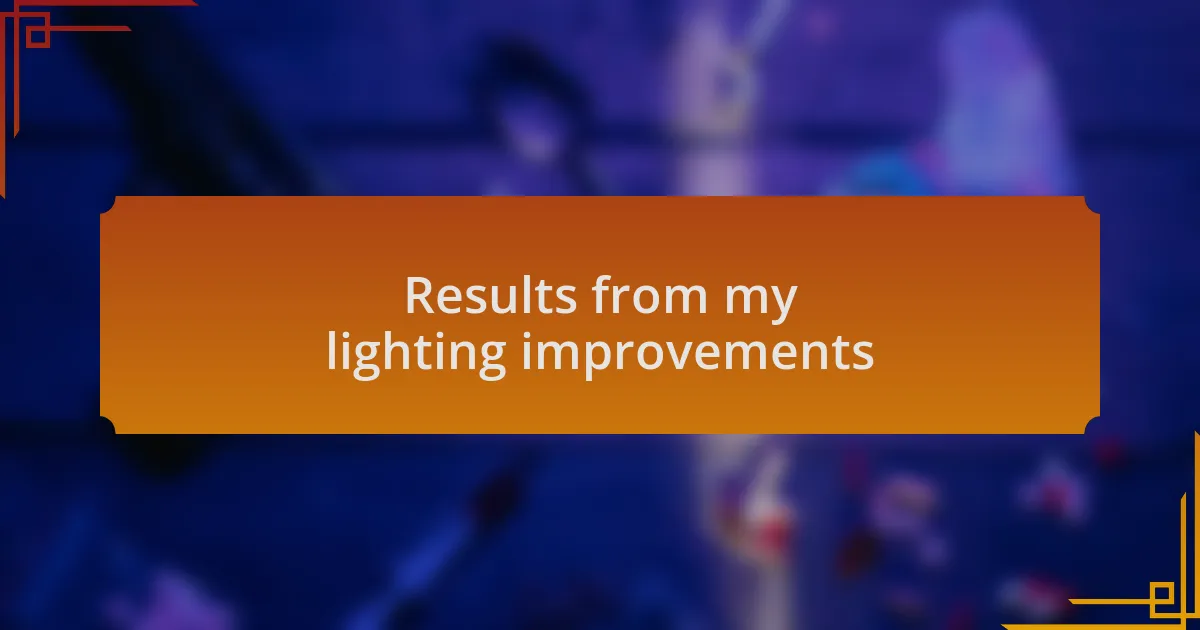
Results from my lighting improvements
After making my lighting improvements, I saw a remarkable transformation in my plants’ growth rates. It was startling to compare the lush, green foliage I had after adjusting my light setup to what I had before—there was no contest. Have you ever experienced a moment when a small tweak leads to such a significant impact? It feels like you’ve unlocked a new level in your growing journey.
One of the most surprising results came from adjusting my light spectrum. By incorporating a mix of blue and red light during crucial growth phases, I witnessed my plants blooming with vibrant colors and increased resin production. I can still remember the awe I felt the first time I examined those crystal-coated buds. Isn’t it a thrill to see your efforts reflected in such beautiful results?
Moreover, the overall health of my plants improved dramatically. Less yellowing and more robust stems suggested that not only were they receiving the right light but also benefiting from the right kind of light. It made me realize how vital it is to pay attention to their needs. Have you ever thought how lighting can influence not just growth but the overall vitality of your cannabis plants? Making these changes has truly deepened my appreciation for the connection between light and plant health.